There is a belief that ficuses bring prosperity and family idyll to the house. Many amateur gardeners seek to plant this plant at home. One of the common species is rubbery ficus, which is not picky about the conditions of detention and is easily amenable to reproduction using cuttings.
Content
Features of the type of plant with a photo
The birthplace of ficus is India and Indonesia, where the plant grows in the form of an evergreen tree and reaches 30 meters in height. Many varieties of its decorative-deciduous indoor counterparts have been bred. Rubber-bearing ficus is also called elastic, and the prefix "rubber-bearing" he received for the presence in his juice of a substance from which rubber can be made. Belongs to the Mulberry family.
Characteristic features of elastic:
- dense oval leaves with pointed tips;
- the color of the leaves is dark green, burgundy, and also with light spots;
- the stalk is strong; in adult plants it is tree-like;
- has milk with a high content of isoprene;
- the tree is capable of flowering, but produces flowers quite rarely;
- elastic rarely releases lateral shoots without assistance;
- prefers an average temperature of 16-18 degrees;
- propagated in several ways.
Several varieties of this species have been developed that differ in appearance and features of caring for them:
- Melanie
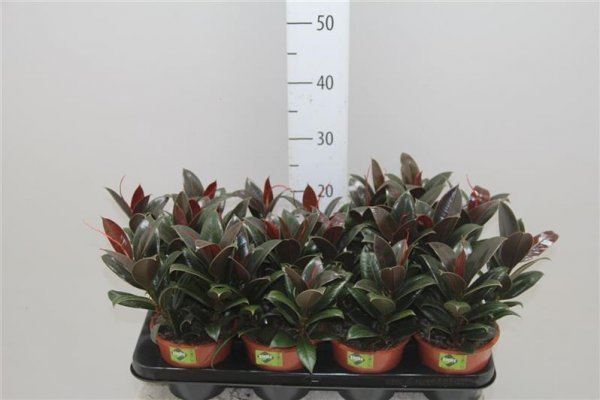
Melanie - Belize
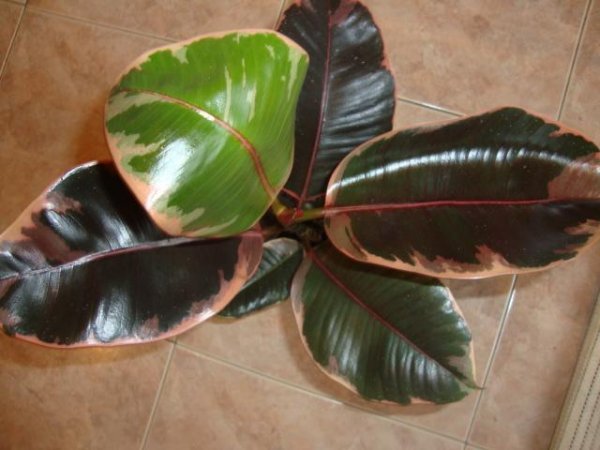
Belize - Robusta
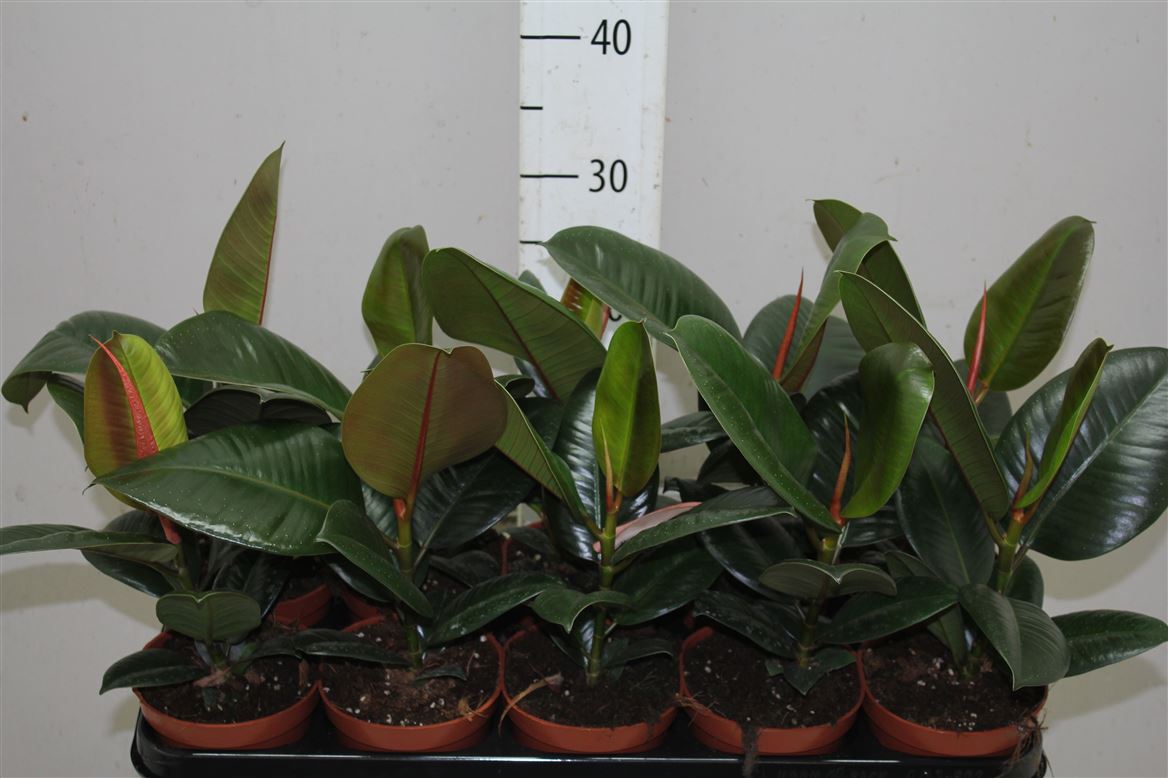
Robusta - Tineke
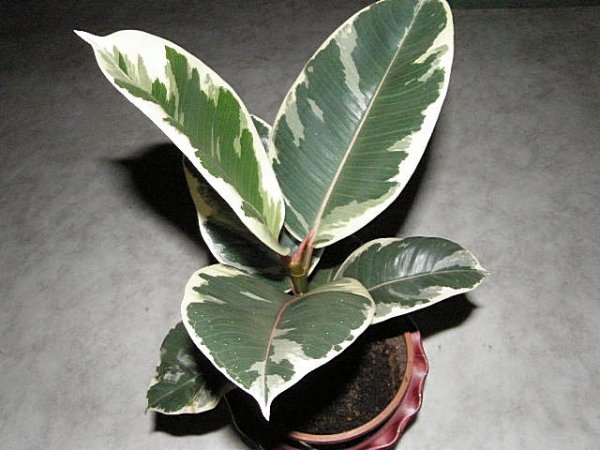
Tineke - Black Prince;
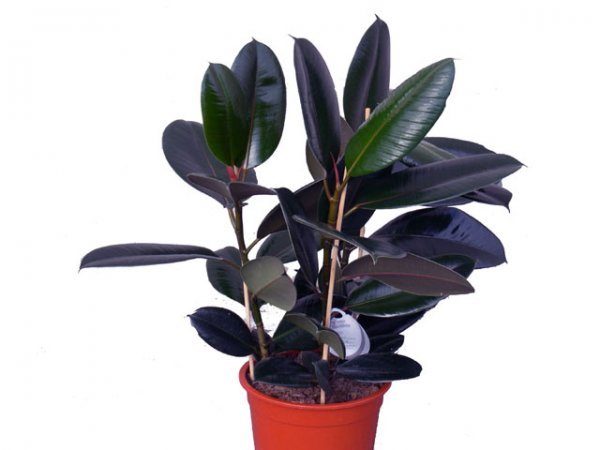
Black Prince - Abidjan;
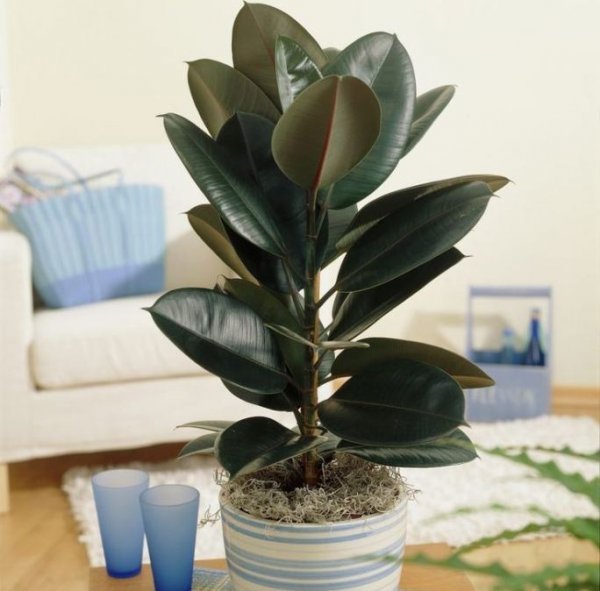
Abidjan - Tricolor;
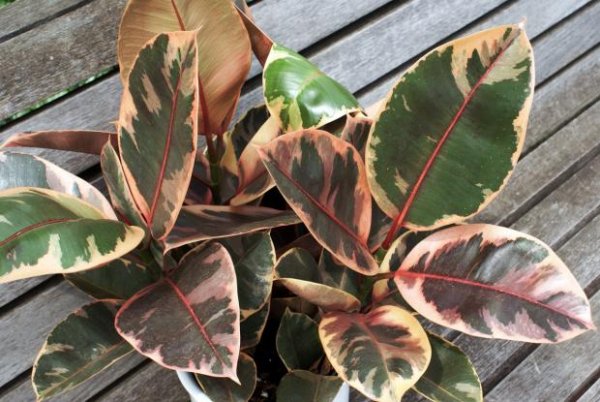
Tricolor - Sriveriana;
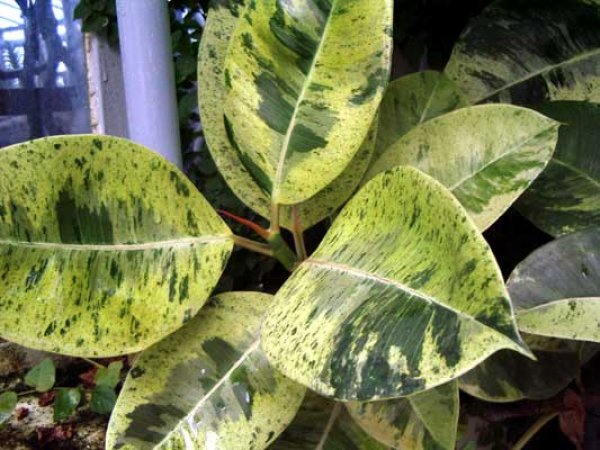
Sriveriana - Variegata.
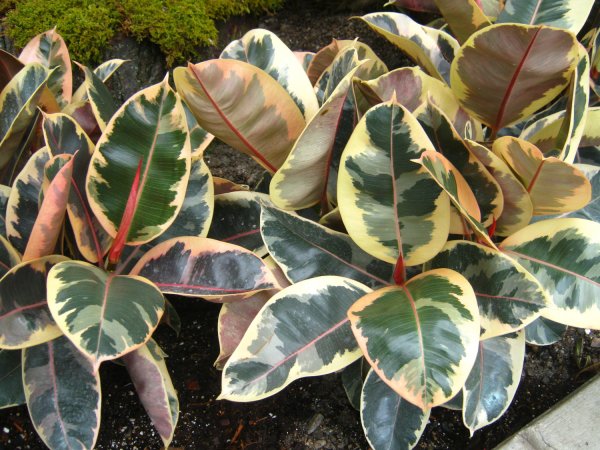
Variegata
A houseplant is unpretentious in care, it does not need additional expensive fertilizers. The tree grows quickly and has a long lifespan.
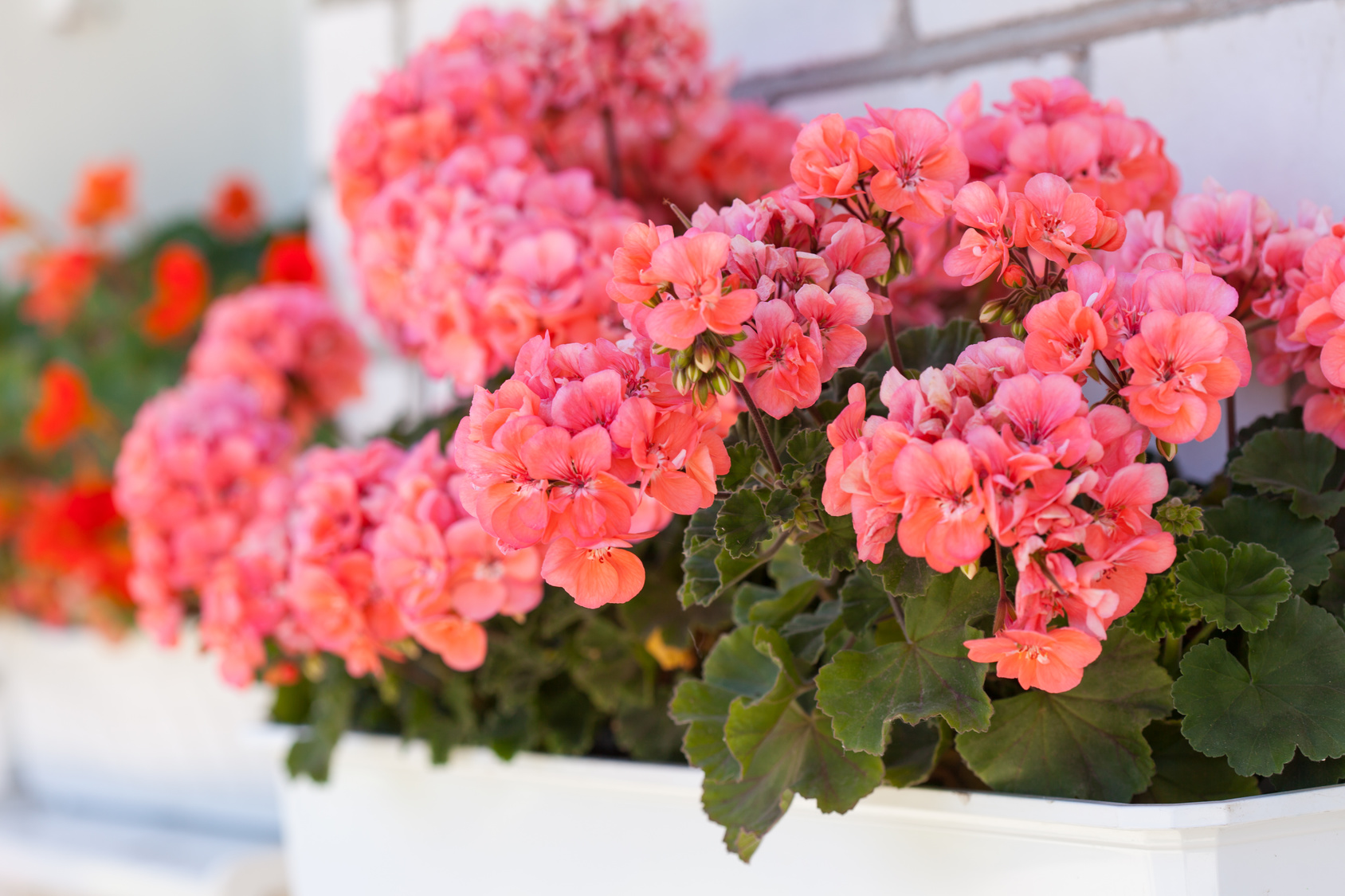 You may be interested in:
You may be interested in:Preparation of cuttings for propagation, rooting
The simplest and most popular way to propagate elastic is to use cuttings. It is best to carry out the procedure from March to June. In order for the transplant process to be successful, you should choose adult ficuses that already have lignified shoots. The algorithm for preparing the cuttings is as follows:
- It is necessary to cut the stalk 10-15 cm long at an angle. For this purpose, both the top of the plant and the side shoot are suitable.
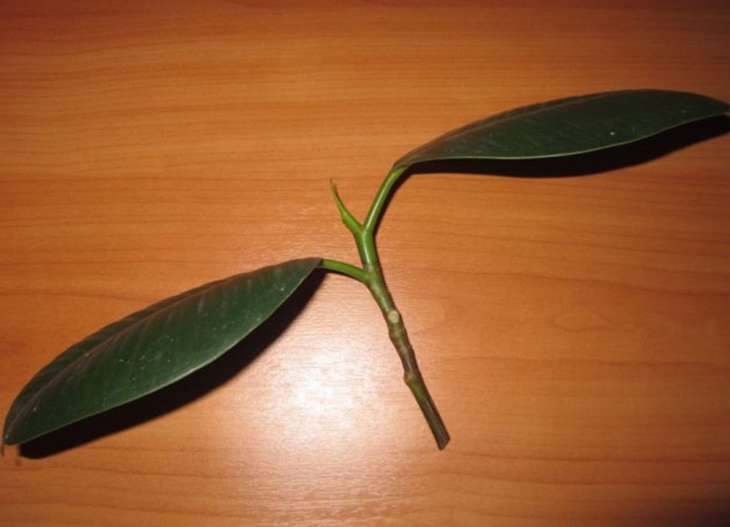
Ficus Shank - The slice must be thoroughly washed under running water or soaked for a couple of hours in warm water until the milky juice, which forms a cork on the slice, disappears completely.
- Make a few vertical cuts at the bottom of the twig and tear off the lower leaves. Only then can we proceed to its rooting.
- The first option is rooting in water. It is necessary to put the thus prepared escape into the water and wait for the roots to appear. To speed up the procedure, you can use special biostimulants or activated carbon.
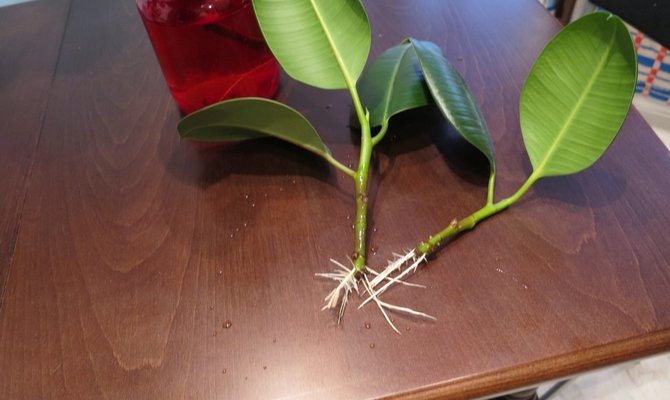
The first sign of the appearance of the roots will be the formed white nodules in the region of the slice, which will soon turn into roots. The next step in obtaining a new young ficus will be the planting of sprouted branches with young roots in the soil.
Planting cuttings
To plant the prepared handle, you will need a mixture of substrate and a vessel, which does not have to be large, because after the beginning of the active growth phase, it will be possible to transplant the elastic into a more suitable flowerpot.
It is necessary to prepare the following substrate for the successful development of a young plant:
- peat - 1 part;
- sand - 1 part;
- drainage - 1 part;
- sheet land - 5 parts.
For sterilization, it is also recommended to pour this substrate with a solution of potassium permanganate and, after drying, proceed to planting the plant. The procedure for planting cuttings is standard, you need to deepen and moisten the soil, loosen it and then place the sprout in the hole made, keeping it to the center as much as possible.

Young Ficus Care
A young plant requires special care in the first two months, since during this period it gains strength and becomes a full-fledged independent ficus. It is important to adhere to the following rules when caring for young elastics:
- Choose a place with good lighting, but without direct sunlight. This will allow the little ficus to grow and gain strength, maintaining the shape of the leaves and strengthening the stem. In the event of an excess of light, it will stretch up, and the leaves will not be able to fully blossom and, most likely, will dry out.
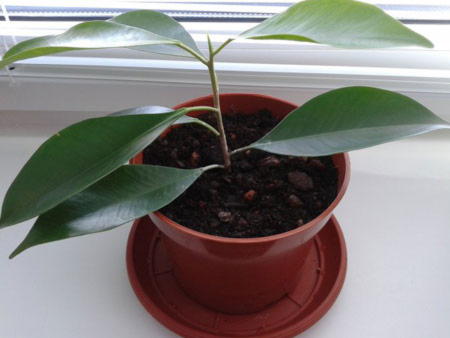
Ficus Care - Depending on the season, it is necessary to withstand the temperature regime: in winter - 15-18 ° C, and in summer - 25-28 ° C.
- Avoid drafts, they are harmful to the developing germ.
- Proper watering is the key to a beautiful and healthy plant. Young elastic must be moistened every 3-5 days, based on the ambient temperature. Important!Do not overdo it, so as not to flood it, adhere to the watering regime, as dry soil will not allow the young sprout to develop fully. It is also important to wipe the leaves or spray them from a spray bottle.
- Top dressing of young ficus in the phase of active growth should be introduced from the second week from the day of planting in the soil and produced every 10-14 days, it will give strength to the roots of the plant, and will also help the development of new leaves. For this purpose, a universal fertilizer for deciduous plants is suitable.
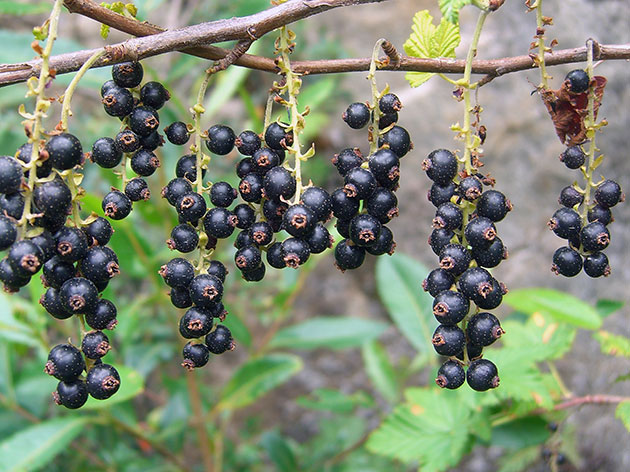 You may be interested in:
You may be interested in:Adhering to these simple rules, you can grow ficus on your own from cuttings and soon get a new plant, pleasing to the eye, at home.
Possible problems and methods for solving them
The rubbery species is rarely susceptible to disease and is not particularly demanding on the conditions of detention, but still the plant can also suffer from improper care or the appearance of pests. Common problems when looking after an elastic:
- Incorrect watering, which leads to drying out or, conversely, overmoistening of the elastic. When drying, the watering regime should be normalized, and the plant will recover. If it was flooded and the roots began to rot, then you can try to save the flower by replanting it in new soil and removing damaged roots.
- Yellowing of leaves due to excess light or excessive proximity of heaters to the flower. You just need to rearrange the ficus in another place - and it regenerates itself.
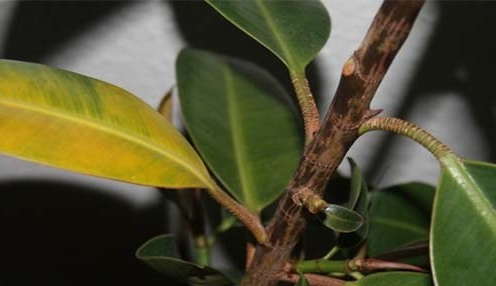
Yellowing leaves - Ficus leaves may also turn yellow due to excess fertilizer; to remove them, it is enough to water the flower plentifully several times and reduce the dose of the drugs used in the future.
- The elastic is poorly developed and becomes unhealthy in case of excess salts in the soil. The problem is solved by transplantation.
Ficus can also suffer from insects, it is advisable to identify their attack on the plant at an early stage and get rid of them. Signs of pest damage are manifested in different ways:
- aphids cover leaves with sticky clots;
- as a result of the attack of a scale insect, brown-white tubercles appear on the leaves;
- a spider mite can be seen by the appearance of a thin spider web that envelops both the trunk and leaves;
- the mealybug is characterized by the appearance of fluffy white fibers and sticky fluid on the leaves and stem.
To rid the elastic of pests, you need to carefully treat it with special chemicals that are sold in flower shops. You can also use folk fighting methods:
- laundry soap;
- Toothpaste;
- garlic;
- tobacco;
- nettle;
- calendula;
- elder;
- sagebrush.
It is necessary to prepare an aqueous solution of the above plants and products and thoroughly rinse the ficus with it to get rid of insects. The procedure is effective at the initial stage of infection and requires repeating several times to achieve a result.
Common Growing Questions
Rubber-bearing ficus is an unpretentious houseplant that can be grown and propagated independently at home. Caring for it does not require special skills, and the process of cuttings allows you to breed several decorative and deciduous plants at the same time, which will give beauty and contribute to creating a favorable climate in the house.

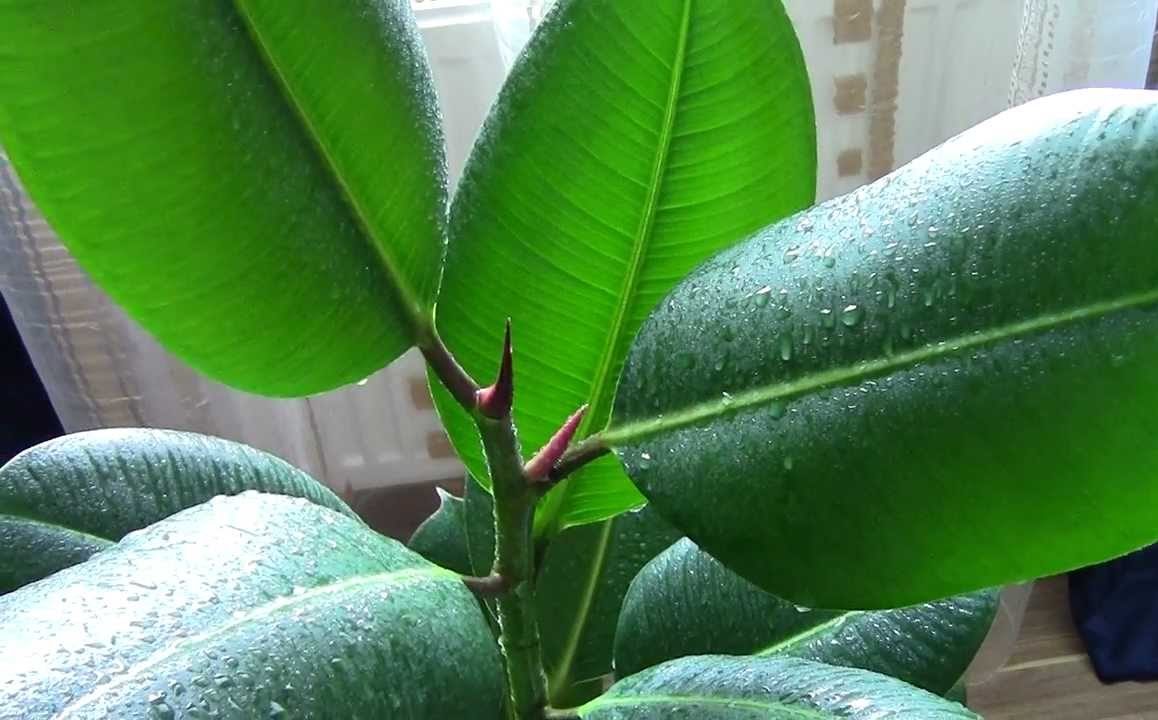
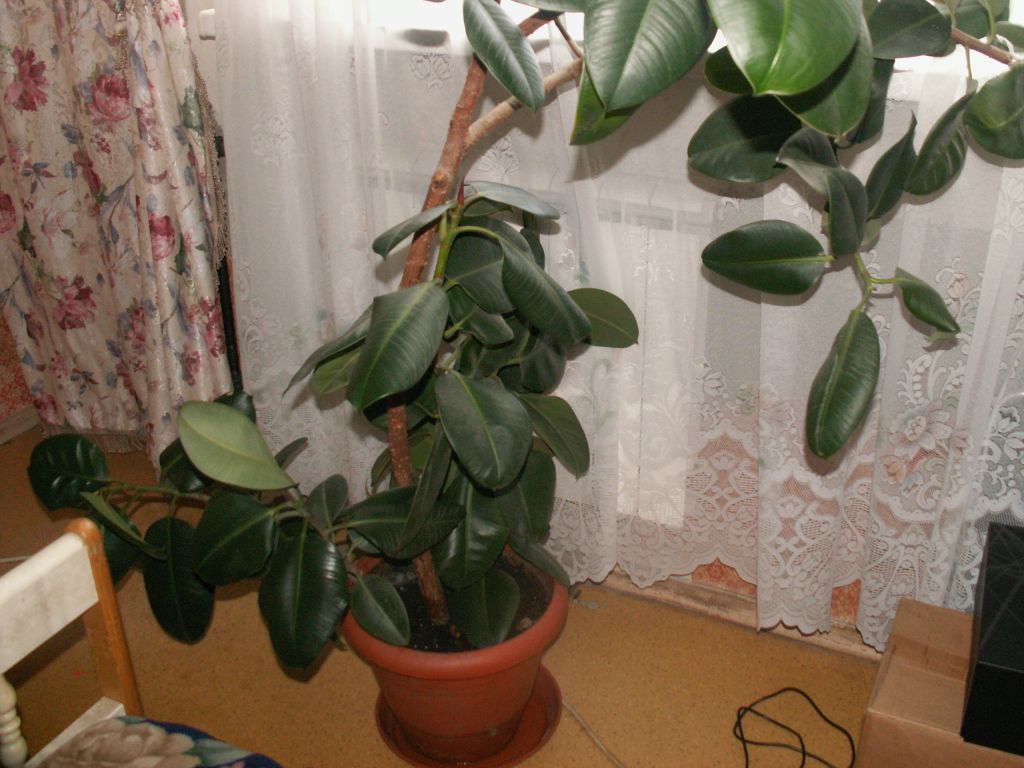
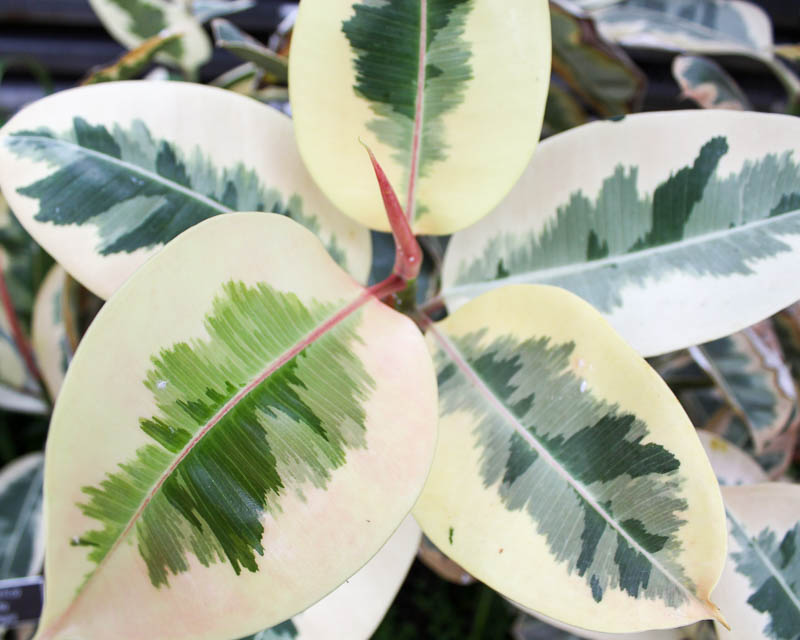
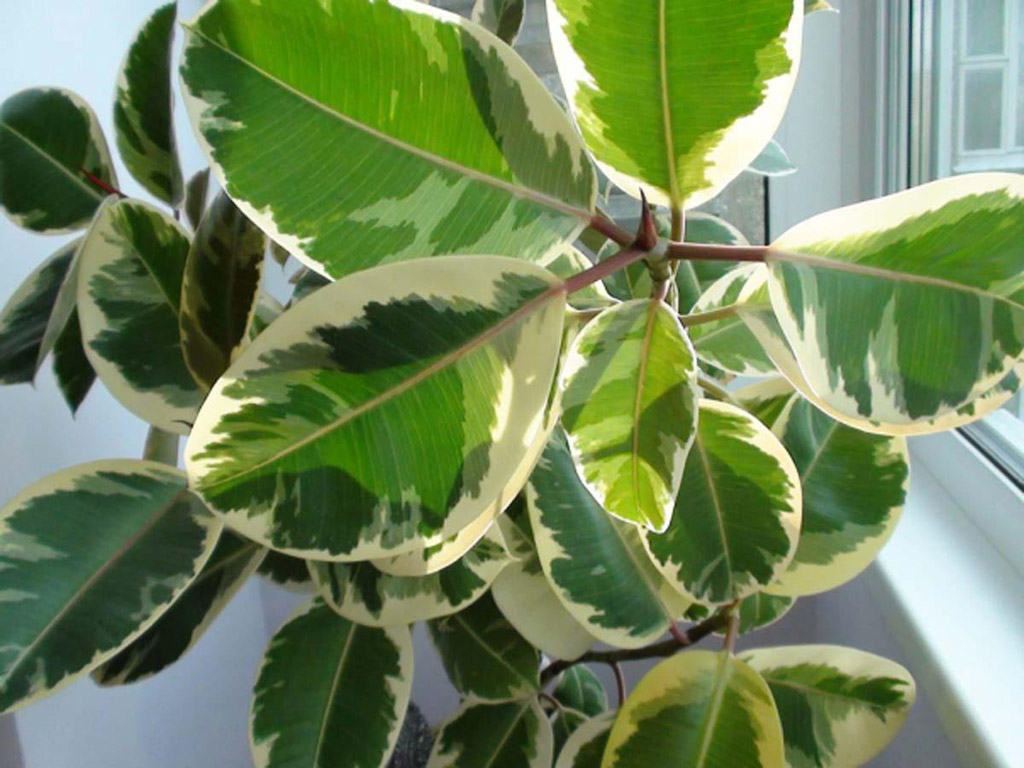
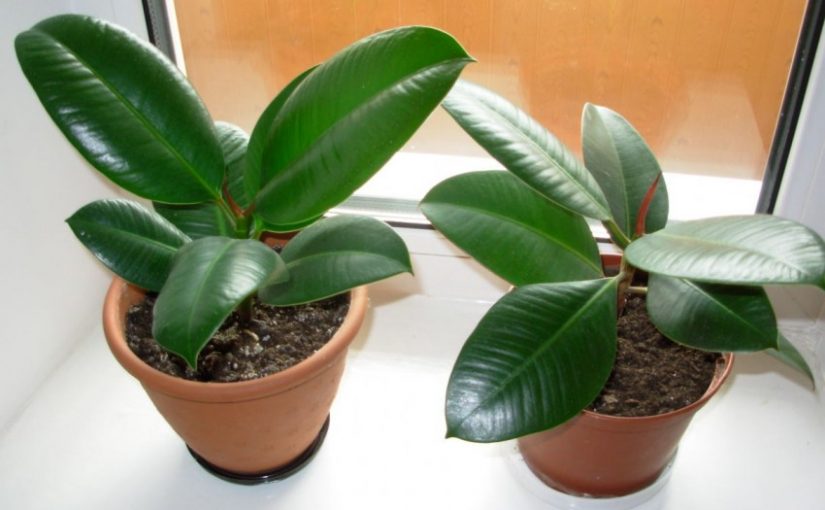
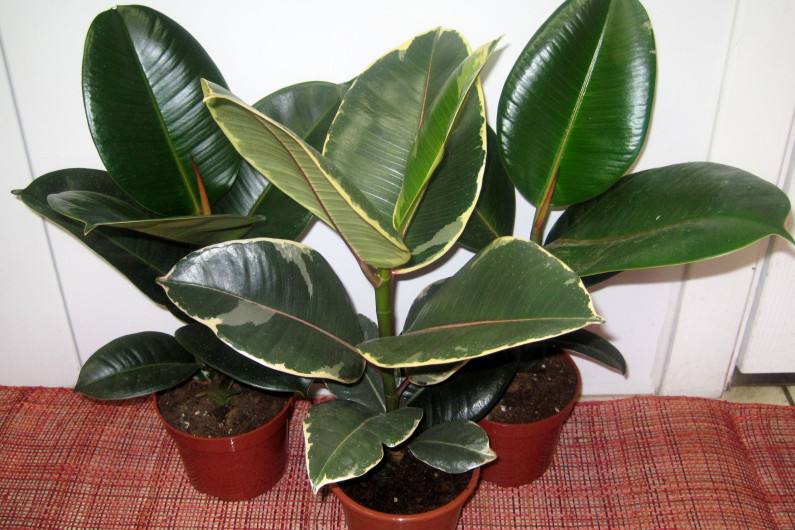



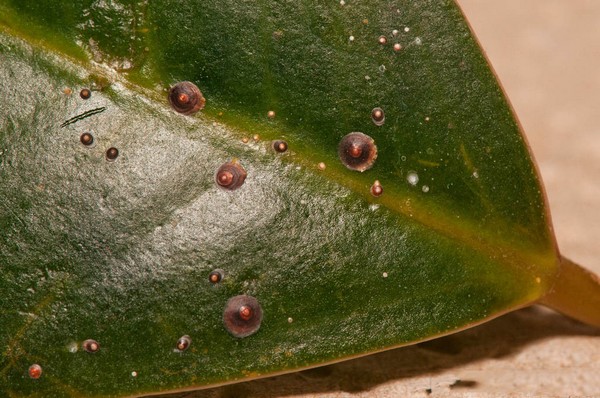
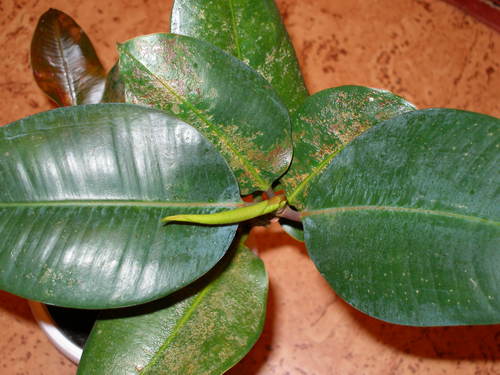

 Sow in the ground, without seedlings: 10 beautiful and unpretentious flowers
Sow in the ground, without seedlings: 10 beautiful and unpretentious flowers Platicodon planting and outdoor care
Platicodon planting and outdoor care Hosta - planting and care in the open ground in the Urals
Hosta - planting and care in the open ground in the Urals Oleander - care and growing at home
Oleander - care and growing at home